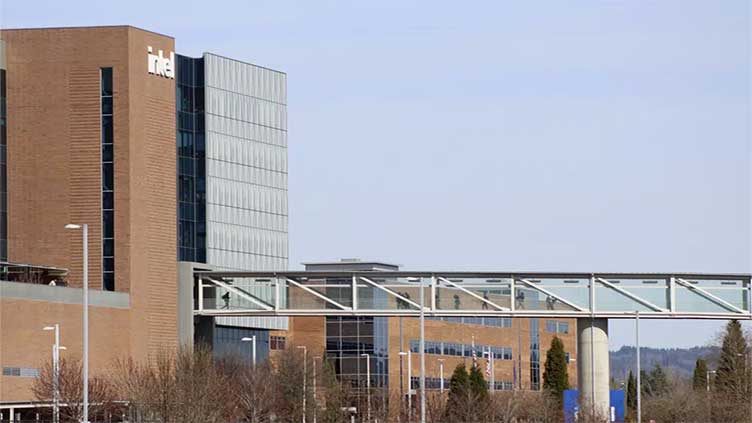Oregon’s land use policy, which has protected the state’s farms and forests from urban sprawl for 50 years, may be altered to attract semiconductor chipmakers to Oregon. The proposed bill being considered in Oregon’s Legislature would authorize the governor to expand urban growth boundaries to provide land for chip companies to build factories. Oregon officials and lawmakers are eager to bring more semiconductor factories to Oregon, as billions of dollars of federal funding to promote the industry are available, and the competition to host multibillion-dollar microchip factories has heated up. The bill has raised concerns among farmers and conservationists about its impact on the state’s open spaces, as the conversion of agricultural lands into paved industrial lands would be a permanent destruction of natural and working lands. Nonetheless, the ways and means committee sent the bill for a vote on the Senate floor, and the Senate will consider the priority legislation this week.
Oregon Considers Altering Land Use to Lure Chipmakers

A bill is being considered in Oregon’s Legislature that could allow the governor to expand growth boundaries on cities, which have been in place for 50 years to protect the state’s farms and forests. The move is part of the state’s strategy to attract semiconductor chip companies, provide suitable land for building factories, and secure a share of the billions of dollars of federal funding available to promote the industry.
The measure would provide $200 million in grants to chipmakers, but farmers and conservationists are deeply worried about the proposal and its impact on the state’s open spaces. For instance, Aaron Nichols, a farmer, expressed his concerns as he gazed toward the massive Intel building looming over the horizon from his farm, which is surrounded by kale rows.
State officials and lawmakers are eager to lure more semiconductor factories to Oregon, especially after Intel’s decision to build a $20 billion chipmaking complex in Ohio last year, instead of Oregon, where suitable zoned land is scarce. Oregon is competing with other states to host multibillion-dollar microchip factories, called fabs. Congress passed the CHIPS Act in 2022, providing $39 billion for companies constructing or expanding facilities that will manufacture semiconductors and those that will assemble, test, and package the chips.
According to a report by the Oregon Semiconductor Competitiveness Task Force, dramatically expanding semiconductor design and manufacturing in Oregon would create tens of thousands of high-paying construction jobs and thousands of manufacturing and supply chain jobs.
Approval by cities and counties can take months or even years if cities want to expand beyond the growth boundaries set by the state’s law. However, if the proposed bill is passed, it would authorize the governor to unilaterally expand those boundaries to attract chip companies and provide land for building their factories. This could result in a major shift in land use in Oregon, a state that cherishes its open spaces.
Farmers and conservationists fear that the proposed bill could significantly alter the state’s land use and impact Oregon’s farms and forests, which have been protected by the state’s growth boundaries law for five decades. The state’s officials and lawmakers are, on the other hand, eager to bring in more semiconductor factories to Oregon and compete with other states. The proposed expansion could create jobs and boost the state’s economy.
Oregon’s Land Use Policy for Chipmakers
Oregon is considering changing its land use policy to attract semiconductor chipmakers to the state, as part of its efforts to compete with other states in hosting multibillion-dollar microchip factories. The move comes after the state was stung by Intel’s decision to build a $20 billion chipmaking complex in Ohio, instead of Oregon, where suitable zoned land is scarce.
For 50 years, Oregon has protected its farms and forests from urban sprawl through a statewide law that places growth boundaries on cities. However, a bill being considered in Oregon’s Legislature could authorize the governor to expand those boundaries unilaterally, to provide land for chip companies to build factories. The proposal would also provide $200 million in grants to chipmakers.
The expansion would create tens of thousands of high-paying construction jobs and thousands of manufacturing and supply chain jobs, according to a report by the Oregon Semiconductor Competitiveness Task Force. However, farmers and conservationists are deeply worried about the proposal and its impact on the state’s open spaces.
Under Oregon’s system, an urban growth boundary (UGB) designates where a city expects to grow over the next 20 years. Once land is included in a UGB, it is eligible for annexation to a city. Those UGB lines are regularly expanded, with 35 approved between 2016 and 2021, according to the Oregon Department of Land Conservation and Development. However, the process can take time, with appeals to the courts or a state board causing further delays.
The proposed bill would authorize the governor to designate up to a maximum of eight sites for UGB expansion: two that exceed 500 acres (202 hectares) and six smaller sites. Any appeals would go straight to the state Supreme Court. This streamlined approach is necessary, according to the Oregon Semiconductor Competitiveness Task Force, because other states offer a more efficient approval process, which is more in sync with the speed of the market.
The bill, which is part of Oregon’s strategy to secure a share of the billions of dollars of federal funding available to promote the semiconductor industry, is a generational change, according to Democratic state Sen. Janeen Sollman, a chief sponsor of the bill. However, some worry that the proposed bill could alter the state’s land use significantly, especially since the state cherishes its open spaces. Nonetheless, Oregon officials and lawmakers are eager to bring in more semiconductor factories to the state and compete with other states.
Oregon Farm Bureau Concerned Over Land Conversion
The Oregon Farm Bureau, which represents 7,000 family farmers, is concerned about the proposed bill that could alter the state’s land use to attract semiconductor chipmakers to Oregon. The bureau believes that the effort should instead focus on lands already within the urban growth boundary, as converting agricultural lands into paved industrial lands is a permanent destruction of natural and working lands. Once the soil is paved over, its ability to sequester carbon, support the food system, and generate income for Oregonians is gone forever.
Washington County, where many farms and forests ring Oregon’s metropolitan centers, produces more clover seed crop than anywhere else in the world, thanks to its unique soil and rainy climate. Nicole Anderson, an associate professor at Oregon State University’s Department of Crop and Soil Science, hopes that science and consideration of land resources will be taken into account when the bill is voted on.
Despite these concerns, the ways and means committee sent the bill for a vote on the Senate floor on Friday. The Senate will consider the priority legislation this week. Republican Rep. Kim Wallan, a chief sponsor of the bill, is thrilled to see the legislation pass out of the committee and is looking forward to seeing it through to the finish line.
Robert Parker, director of strategy at the University of Oregon’s Institute for Policy Research and Engagement, believes that the proposed bill’s passage would not mark the start of the end of Oregon’s treasured policy. He thinks that there will be more challenges and bumps in the road ahead, but the state’s policy has the inertia to carry it through those challenges.
Don’t miss interesting posts on Famousbio









